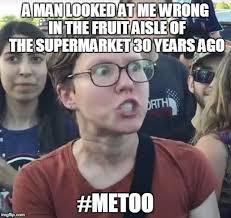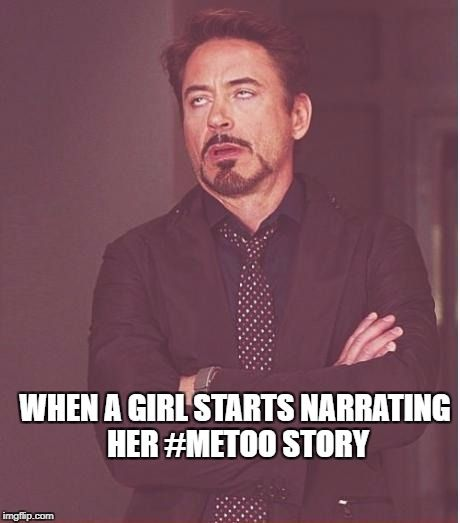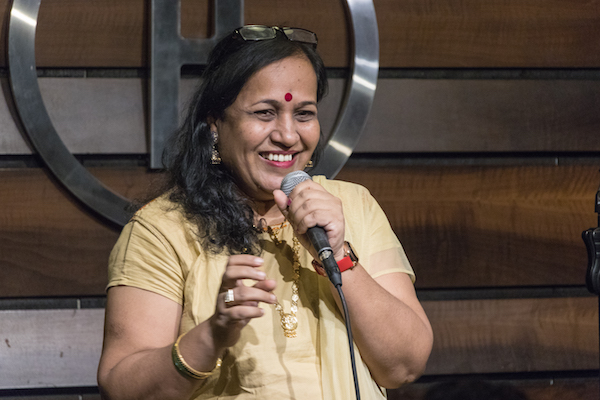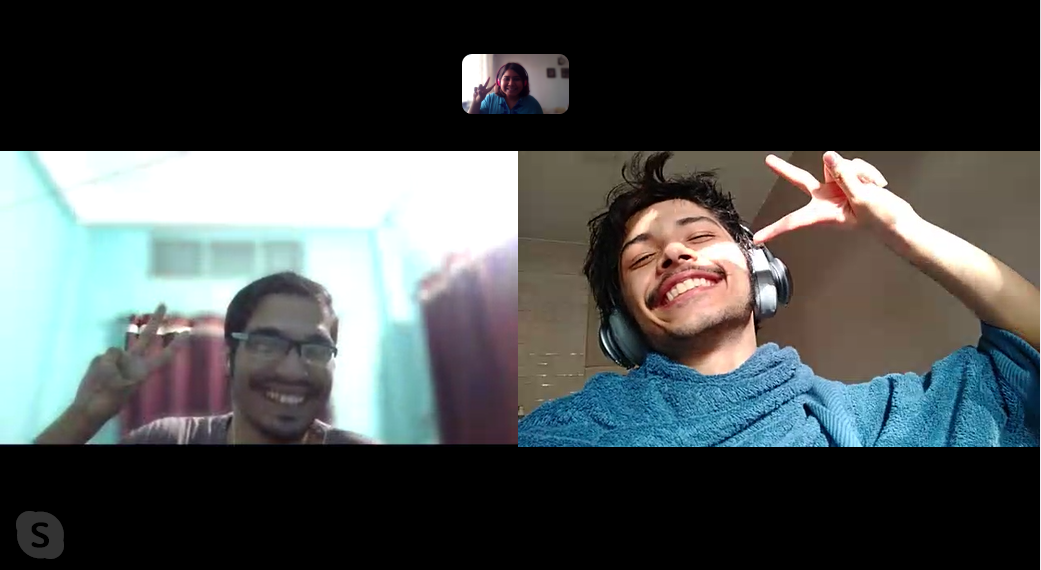by Kshiti S.V.
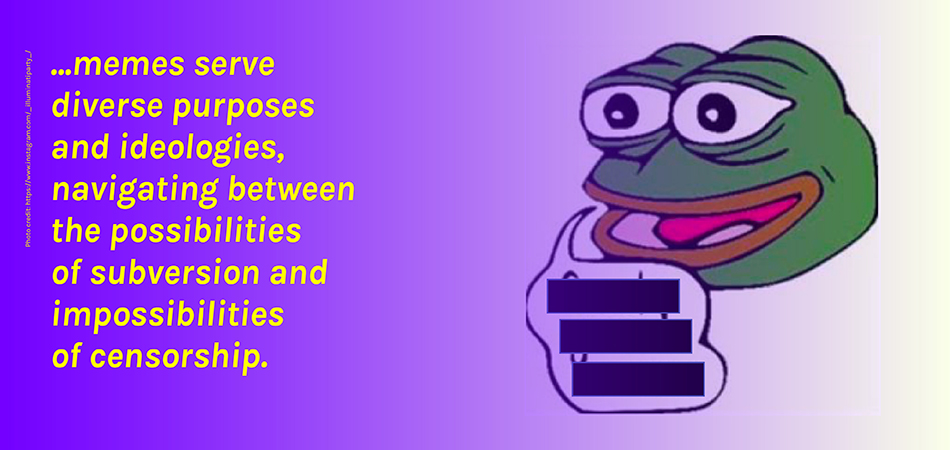
While the transaction of memes (yes, even dank ones) seems relatively easy and hassle-free, it is as fraught with censorship as any other piece of information that gets digitized.
The very format of a meme calls for a platform where anybody can use it to represent themselves. It is a medium which facilitates the telling of a truth by making use of something that has already been created and floating in the media to symbolize an idea. This replication is essentially what leads to virality. For a meme to become viral, evidence suggests that it needs to be genuine, one that answers questions, makes relatability easier and one that can be easily registered in and appealing to the human brain. In a way, they are some of the most perfect tools for satire.
What’s a subversive meme?
If we examine the history of satire in the Indian context of visual culture, we immediately come across the illustrations by Gagandrenath Tagore to as recent as R. K. Laxman. These illustrations are full of political commentary and were an attempt to reflect the social and political conditions of that given era from a reformist lens. These visual illustrations were an important device of storytelling- which were localized to reach a wider audience. While graphic illustrations, cartoons and comics continue to serve the purpose of image-text interaction in furthering certain ideologies, in contemporary times, memes have come to serve a similar purpose with relatively more flexibility for modification. As memes borrow from several elements of pop culture, there are several subversive possibilities of memes which will explore in the course of this article. These eventually lead up to memes becoming crucial cultural devices by themselves. Thus we believe in the potency of memes turning into effective tools for communication and want to explore how censorship governs and restricts the extent of subversion that memes rampantly employ.
Given the adept nature of memes for subversion of a given idea, we would like to state that memes are not inherently subversive. Are there possibilities for subversion? Absolutely. But are they absolutely subversive in nature? Not exactly. Replication and repetition are two elements of memes that foster dynamic meaning making as they travel across sites and contexts. However, given the viral nature of circulation of memes across social media platforms, they become important sources of agency for several people. When exploring the increasing presence of memes on social media, it is interesting to look at one force which controls the nature and reach of memes- the algorithm.
Agency versus Algorithm
According to digital creator Ankit Srivastava, censorship comes through two mediums primarily- censorship by the algorithm of the app/online platform and self-censorship.

The censorship issued by the algorithm of online platforms, Instagram in particular affects the reach of any particular meme to the ‘Explore’ section, thereby affecting the number of views it gets. The algorithm issues a “non-family friendly” clause to the creator and it is then up to them whether to continue anyway, or comply and reserve their viewership. Often creators self-censor their content in order to better appeal to a larger audience, hoping to make their meme more or less universal. However it is important to understand that even in such a scenario, the creators are largely appealing to the audience in and of the mainstream, which brings the danger of confining the marginalized to the margins. This further leads to the normalized overrepresentation of the upper middle class, thereby making the divide more and more visible.
Another aspect to self-censorship is its relation to creators who want to deliver their content in the truest manner possible and in that regard, self-censorship is restricted to making the online networking communities more and more comfortable with the content in question. For such content, the makers must rely on the virality potential of their meme.
(Un)Safe Spaces
Censorship in the context of memes is interesting to explore in terms of state control and use of memes to contest it. Let’s start by discussing the relevance, scale and participation in online memetic communities. We’ve heard of popular 4chans and 9GAGs and the huge community of users who actively generate content and circulate it there. If we explore the reasons leading to circulation of memes- it’s because of the interactive and participatory functions that such communities serve, in a way democratizing the content that can go under the meme format. While appreciating their democratic nature, it is also important to be mindful of the scale of violence that online communities, under anonymity can ignite. Cyberbullying cases are galore and worth checking into before committing to a community. An analysis of comments on 4chan by VICE has indicated a spike in hate speech by 40% since 2015. Two key things that help such platforms escape reported violence are- coded language (not explicit) and dynamic reach to servers. If one server rejects their site, they can set it up on another. So while being a platform for expression and casual in nature, these also act as validation for the darker sides of humanity and that’s a tension that needs easing.
In the dark times will there also be memeings?
A key point, as proposed by Professor Sangeet Kumar, is how memes act as a disguise to dissenting speech due to the garb of satire and humour that they are embedded in. They provide a space for to further alternate discourses often looked upon as dissent. Since the very nature of memes is in stark contrast to academic debates and furthering of ideologies, they have a wider reach and grip over their audience. This also plays into the increasing levels of cultural literacy that becomes accessible to a large number of the population. Social media platforms that facilitate the circulation of memes also ensure that recirculation is made easy- just a click, a share, a retweet away (Kumar, 2015).
It’s not wonder then that memes as a voice of dissent have come to assume a central place in several social movements. In censorship heavy countries like China, the ‘cute cat memes’ are an effective way in which activist messages can be embedded and conveyed. An Xiao Mina, author of Memes to Movements: How the World’s Most Viral Media is Changing Social Protest and Power writes about how social movements have become ‘transmedia hubs’- a term coined by Sasha Constanza-Chock, and how memes play into the larger discourse of creating and reproducing symbols. The Umbrella movement can be an example here, whereby the umbrella was used as a symbol by Hong Kong protestors demanding democracy. It was used as a symbol in several memes to escape narrative control by censorship authorities.
Hence it is interesting to explore the blurry lines between the silly and serious nature of memes, as proposed by Mina. Political messages are often embedded within memes and animals that represent memes like cats or goats and care is taken for its meaning to be culturally entrenched, so as to engage the audience on a deeper level than a mere semantic one.
However memes are not always used as tools to further empower a social movement. There have been instances when memes were used to ridicule a movement that gained traction on the internet. Owing to the humour that is inherent in memes, they were used to ridicule the #metoo movement by humiliating people who used that platform to voice their experiences.
The Me Too movement was started by activist Tarana Burke on Myspace in 2006 to help other women with experiences of sexual harassment to stand up for themselves. A decade later, actor Alyssa Milano popularised the movement on Twitter turning it into a hashtag post the Harvey Weinstein sexual abuse cases. The path-breaking movement, which recorded 19 million tweets with the same hashtag within a year, led to survivors’ statements being viewed with much skepticism. Disbelief in survivors’ narratives is essentially a viral idea that perpetuates the hegemonic practice of mostly cis-het men twisting a narrative to suit their own selves. One of means employed for this counter movement was making memes and circulating them.
TikTok Takeover
A relatively new platform that has literally transformed the very format in which memes are presented is TikTok. Video memes aren’t new, YouTube has them too, but the 15s feature of TikTok videos makes it reach a wider audience because of the ease with which one can produce and upload a video on the platform. A 15s tap away and we can watch about 4 memes in under a minute. TikTok curates our feed based on our liking, which it records based on what we see and its algorithm functions accordingly. However, beyond these various offers that TikTok makes to reach out to and attract more users, there are also reports of its unclear and skewed “community guidelines”.
TikTok’s community guidelines are largely vague and secretive, reports suggest that moderators are asked to eliminate content that makes a mention of historical anti-state events like the Tiananmen Square and no mention of listed political leaders. Along with this, TikTok heavily allegedly monitors several parameters before sharing content across its algorithm- standards of beauty, the background in your video, class, race, etc. Censoring the representation of traditionally marginalized communities and altering political speech explains how TikTok remains controlled. Such furthering of normative ideologies serves as a problem for so many TikTokers who look at the space as a free platform of self-expression.
This could also explain the niche community of Indian TikTok v/s other TikToks. The usage of TikTok has been starkly different from other places where it has gained popularity. Along with actively repressing narratives from the oppressed communities, there have been reported incidents of violence which stemmed from TikTok. In one instance, a man from Tamilnadu yelled casteist slurs and threatened violence against the Dalit community. When protests broke out in response to such an atrocity, the accused shifted the blame onto his friend who encouraged him to produce and upload such content and went on to kill him. Thus it becomes important to acknowledge the violence that digital platforms can foster, and understand the nuances of censorship when it comes to hate speech.
Memes as tools that effectively aid communication, constantly negotiate their existence and prevalence. Whether through organic virality or through strategic co-option, memes serve diverse purposes and ideologies, navigating between the possibilities of subversion and impossibilities of censorship.
References
Memes: Innocent fun or internet bullying?: https://world.wng.org/2015/03/memes_innocent_fun_or_internet_bullying
Memesis: community and self-definition in the age of memes: http://digicult.it/internet/memesis-community-and-self-definition-in-the-age-of-memes/
Instagram Memes: The Best Brands Embracing Memes on Instagram: https://buffer.com/resources/the-meme-ification-of-instagram
The Age of Post-Authenticity and the Ironic Truths of Meme Culture: https://medium.com/s/story/post-authenticity-and-the-real-truths-of-meme-culture-f98b24d645a0
Meme communities and how to meme correctly: https://www.diggitmagazine.com/interviews/memes-communities
Instagram and Algorithms [Text Messaging]. Instagram Chat with Ankit Srivastava.
Contagious memes, viral videos and subversive parody: The grammar of contention on the Indian web: https://doi.org/10.1177/1748048514568758
No laughing matter: The Politics of Satire: https://www.nationalheraldindia.com/india/no-laughing-matter-the-politics-of-satire
Revealed: How TikTok censors videos that do not please Beijing: https://www.theguardian.com/technology/2019/sep/25/revealed-how-tiktok-censors-videos-that-do-not-please-beijing
Memes to Movements: https://datasociety.net/library/an-xiao-mina-memes-to-movements/
Invisible Censorship: https://theintercept.com/2020/03/16/tiktok-app-moderators-users-discrimination/
We Analysed More Than 1 Million Comments on 4chan. Hate Speech There Has Spiked by 40% Since 2015: https://www.vice.com/en_in/article/d3nbzy/we-analysed-more-than-1-million-comments-on-4chan-hate-speech-there-has-spiked-by-40-since-2015
19 million tweets later: A look at #MeToo a year after the hashtag went viral: https://www.usatoday.com/story/news/2018/10/13/metoo-impact-hashtag-made-online/1633570002/
New investigation reveals TikTok’s compliance in spreading hate and violence in India: https://screenshot-magazine.com/technology/social-media/tiktok-hate-india/
